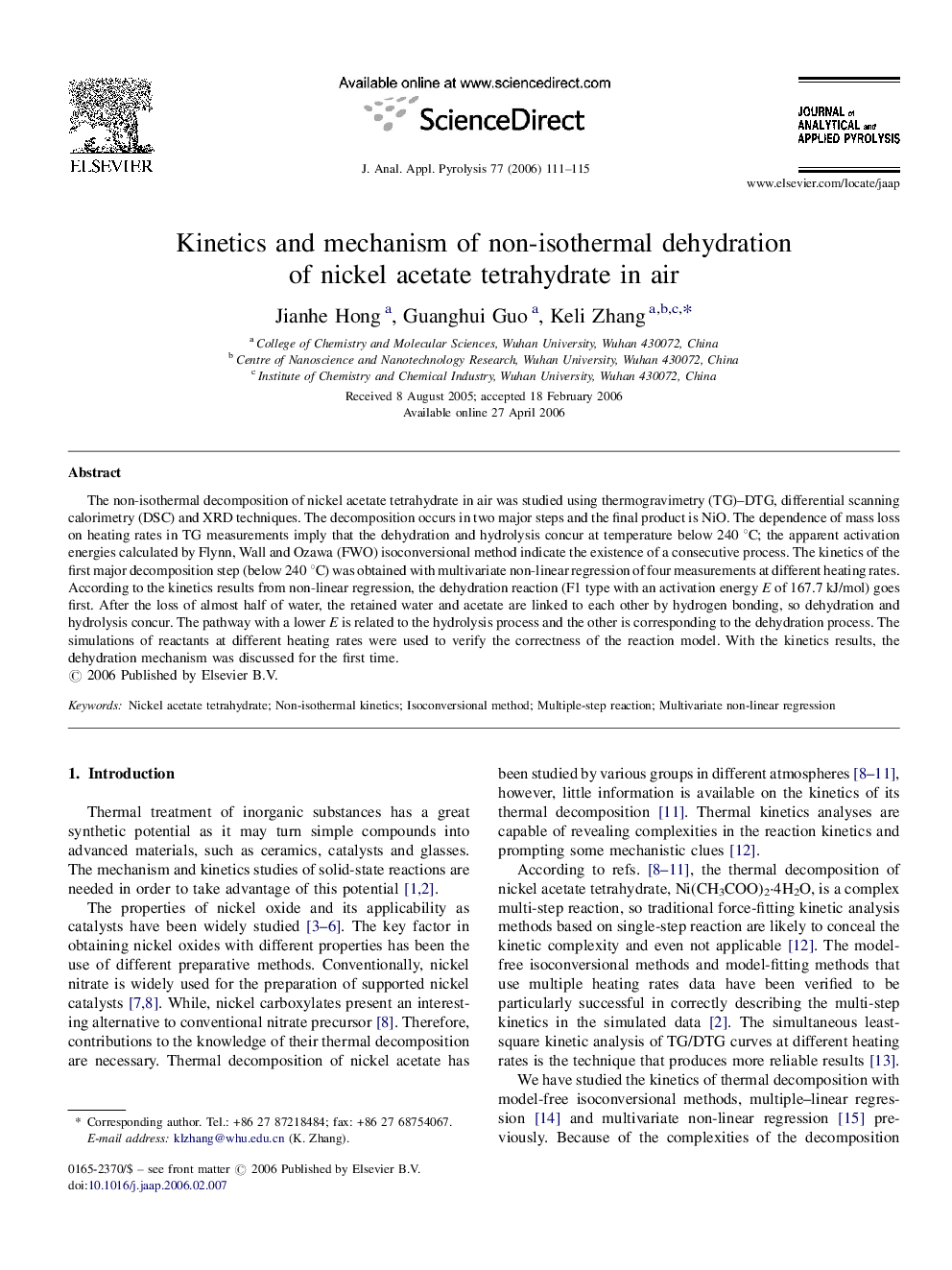| Article ID | Journal | Published Year | Pages | File Type |
|---|---|---|---|---|
| 1198027 | Journal of Analytical and Applied Pyrolysis | 2006 | 5 Pages |
The non-isothermal decomposition of nickel acetate tetrahydrate in air was studied using thermogravimetry (TG)–DTG, differential scanning calorimetry (DSC) and XRD techniques. The decomposition occurs in two major steps and the final product is NiO. The dependence of mass loss on heating rates in TG measurements imply that the dehydration and hydrolysis concur at temperature below 240 °C; the apparent activation energies calculated by Flynn, Wall and Ozawa (FWO) isoconversional method indicate the existence of a consecutive process. The kinetics of the first major decomposition step (below 240 °C) was obtained with multivariate non-linear regression of four measurements at different heating rates. According to the kinetics results from non-linear regression, the dehydration reaction (F1 type with an activation energy E of 167.7 kJ/mol) goes first. After the loss of almost half of water, the retained water and acetate are linked to each other by hydrogen bonding, so dehydration and hydrolysis concur. The pathway with a lower E is related to the hydrolysis process and the other is corresponding to the dehydration process. The simulations of reactants at different heating rates were used to verify the correctness of the reaction model. With the kinetics results, the dehydration mechanism was discussed for the first time.
